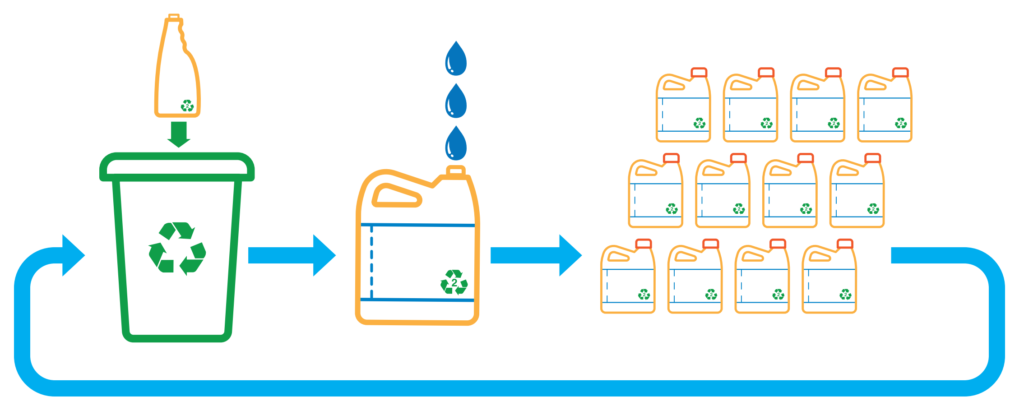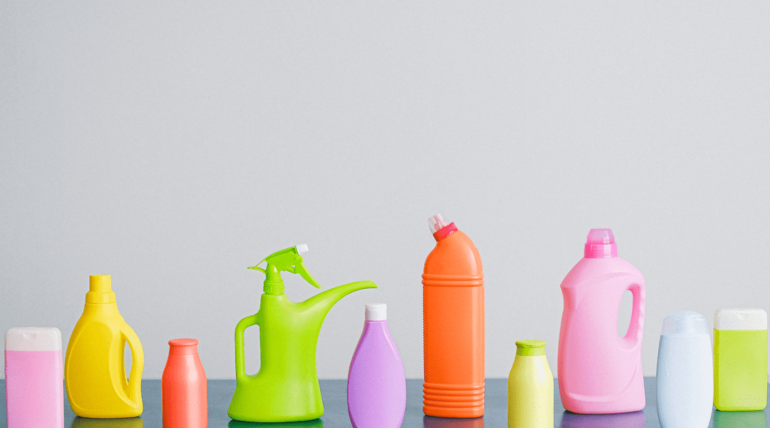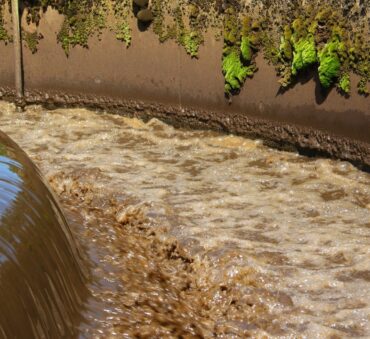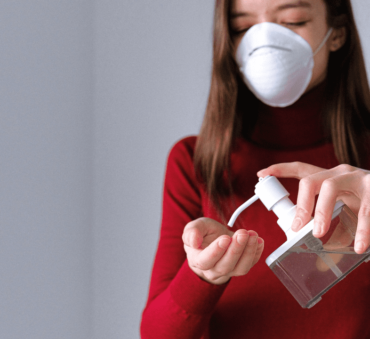Cleaning agents, whether splashed, sprayed, or poured, work wonders at banishing dirt and germs. But what happens when these products expire, or you no longer need them? Both in our homes and vast industries, expired or leftover cleaning solutions present a dilemma. But it’s essential to recognize that our cleaning responsibilities don’t end with a gleaming surface; they extend to ensuring disposal as conscientious as cleaning itself. As it’s the case of liquid waste management in general, cleaning products are no exception.
In this post, we’ll discuss how to dispose of cleaning products, the potential dangers they pose when not disposed of correctly, and some very important (and possibly lifesaving) things to keep in mind.
Key Takeaways
- Environmental and Health Implications: The careless disposal of cleaning agents can have severe consequences, affecting everything from soil and water quality to human health and wildlife.
- Common Chemicals and Dangerous Chemical Interactions: Be aware of the chemicals in your cleaning products. Mixing certain agents can lead to hazardous, even toxic, reactions.
- How to Dispose of Cleaning Products: Always read the label for disposal guidelines. Options may include dilution, trash disposal, and specialized recycling services.
- Safety Precautions: Prioritize safety by wearing gloves, ensuring good ventilation, and handling containers carefully to avoid spills or reactions.
- Shapiro’s Expertise: For those looking for a comprehensive solution to hazardous waste management, Shapiro offers services that are both environmentally responsible and compliant with regulatory standards.
Why Disposing of Cleaning Products Properly is Crucial?
Environmental Implications
When cleaning agents are casually discarded, the environment often pays the price.
- Soil Contamination: When cleaning agents are carelessly discarded, they can seep into the ground, altering the soil’s natural chemistry and disrupting the growth of plants.
- Water Pollution: Pouring cleaning solutions down the drain might seem harmless, but it can lead to chemical buildups in our waterways, affecting aquatic life and even our drinking water.
- Air Pollution: Some cleaning agents release volatile compounds into the atmosphere. These compounds can react with other pollutants, contributing to smog formation and deteriorating air quality, which in turn can have adverse effects on human health and the environment.
- Resource Waste: The production of these cleaning agents consumes valuable resources. When wasted, it’s not just the product but also the energy and materials used in its creation that are lost.
- Negative Effects on Wildlife: Whether it’s birds ingesting polluted water or land animals encountering contaminated soil, the health complications can range from mild irritations to severe conditions, affecting their survival and reproduction rates.
Safety and Health Concerns
Beyond our planet’s well-being, there’s ours to consider. Mishandling or incorrectly disposing of cleaning agents isn’t just an environmental concern; it’s a direct threat to human health. Spilled or improperly discarded agents can lead to skin irritations, respiratory issues, and even severe health complications.
Common Chemicals in Cleaning Products
Cleaning products often contain the following chemicals:
- Ammonia: a popular shine-booster in window cleaners, ammonia can irritate the lungs and skin, and its release into waterways can harm aquatic life.
- Bleach (sodium hypochlorite): while it’s a powerhouse in disinfecting and whitening, bleach can harm the respiratory system when inhaled and wreak havoc on aquatic ecosystems when improperly discarded.
- Phosphates: these water-softening agents in detergents can lead to nutrient pollution in water, causing harmful algal blooms that suffocate marine life.
- Phthalates: often lurking in fragranced cleaning products, phthalates can disrupt hormones and are a concern for aquatic life when they enter water systems.
- Chlorine: beyond keeping pools clean, chlorine in household products can irritate the skin and eyes and, when released, can be toxic to aquatic creatures.
- Sodium Hydroxide: found in oven and drain cleaners, this caustic substance can cause severe burns on contact and is harmful to aquatic life.
- Hydrochloric Acid: a potent component in some toilet bowl cleaners, it’s corrosive to the skin and eyes and can be detrimental to marine environments when improperly disposed of.
- Alcohol: the antimicrobial properties of alcohol are essential for disinfection and cleaning. However, it can have dire consequences on the environment and human health when not handled properly. Cases of hand sanitizer disposal during Covid-19 pandemic is a very good example.
These agents often require specific chemical waste disposal methods that you should take into consideration.
The dangers of mixing cleaning products
It’s extremely important to remember that when disposing of old cleaning products, different chemicals must never be mixed. This is because when certain chemicals interact, they produce substances that are dangerous or even toxic.
- Ammonia + bleach: When these two are mixed, they produce chloramine vapors, a toxic cocktail that can lead to respiratory distress, throat burns, and can even cause unconsciousness if inhaled in large amounts.
- Bleach + vinegar: Combining these releases chlorine gas, a noxious substance that can irritate the eyes, nose, and throat, and, in high concentrations, can be fatal.
- Bleach + rubbing alcohol: This combination results in the formation of chloroform. Inhalation can lead to dizziness, nausea, and in high concentrations, can render a person unconscious.
- Hydrogen peroxide + vinegar: Individually, they’re potent cleaners, but together they produce peracetic acid, which can cause skin and eye irritation, and when inhaled, can harm the respiratory system.
- Bleach + toilet bowl cleaners: Mixing these together can release a cocktail of chlorine and chloramine vapors. These resulting fumes are harmful, causing respiratory issues and a burning sensation in the eyes and throat.
- Drain cleaners of different brands: Combining different drain cleaners can sometimes produce chlorine gas or even result in explosive reactions. Such a combination is not only harmful to the respiratory system but also poses a significant safety risk due to its unpredictability.
Pre-disposal Steps
Before you dispose of cleaning products, it’s important to take a few elements into consideration:
- Storage: It’s essential to give cleaning agents their own dedicated space. Ensure each container is sealed tightly to prevent any accidental spills. Grouping similar items together can be helpful, but always be cautious to keep chemicals that might interact negatively separate.
- Shelf Life: Cleaning products don’t last indefinitely. Over time, their efficacy can diminish. Regularly check your products for any changes in consistency, color, or odor to gauge if they’re still effective.
- Child and Pet Safety: The allure of colorful bottles can be tempting for curious hands and paws. Always store cleaning agents in a place that’s inaccessible to children and pets, ensuring their safety.
- Assess usability: Some cleaning agents, even if they’ve been around a while, can still serve their purpose. Assess the usability of each product and set aside those that are still effective. For the rest, it’s time to consider responsible disposal methods.

How to Dispose of Cleaning Products
1. Reading Labels
Before disposing of any cleaning products, take a moment to flip that bottle around and read the label. Manufacturers often provide clear guidelines on how to safely discard their products. It’s a small step that goes a long way toward ensuring we’re not unintentionally harming our environment.
2. Understanding Disposal Methods
a. Dilution Method
Some cleaning agents are potent in their concentrated form. For these, dilution can be the answer. By adding water, you reduce their impact, making them safer for disposal. But remember, not all products are suitable for this method.
b. Disposal in the Trash
Believe it or not, some cleaning products are harmless enough to be thrown out with your regular trash. But this doesn’t apply to all. Only specific products, when used up almost entirely, can take this route. Once again, always double-check the label to ensure you’re not discarding something that requires a more careful approach.
c. Recycling cleaning products
You don’t always have to dispose of cleaning products, you can recycle them. The eco-friendly route is always a commendable choice. Some cleaning solutions can be reclaimed or even reused. Specialized facilities can process and reintroduce them into the production cycle, minimizing waste.
d. Safe Drain Disposal
Some cleaning agents are designed to go down the drain, breaking down without causing harm. If the label gives the green light, ensure you follow the recommended amounts and methods.
e. Donation Options
Think twice before discarding that almost-full bottle. Schools, shelters, or community centers might be in need. Donating can be a win-win, giving your cleaning agent a second chance and helping out someone in the process.
f. Disposal Services
For those tricky products that don’t fit neatly into any of the above categories, there are specialized liquid waste disposal services out there. They’re equipped to handle and dispose of cleaning agents in a manner that’s both safe and environmentally responsible.

3. Safety Considerations
Cleaning chemical disposal should never be taken lightly. Always prioritize your safety by taking the following precautions:
- Always wear gloves to protect your skin from any residual chemicals.
- Ensure you’re in a well-ventilated space to avoid inhaling fumes.
- Handle containers carefully, especially if they show signs of wear or leakage, to prevent accidental spills.
And remember, as we discussed earlier, mixing different cleaning agents can lead to harmful reactions, so always keep them separate.
Conclusion
When it comes to hazardous waste management, including disposing of old cleaning products, Shapiro stands as a trusted authority. With years of expertise, we specialize in the safe and compliant disposal of cleaning agents and other hazardous materials. But we don’t just stop at disposal services; we’re committed to sustainability. Our eco-friendly initiatives focus on reclaiming and reusing materials whenever possible, reducing the overall environmental impact.
So, if you’re grappling with how to properly dispose of unused cleaning products, contact us. Our services adhere to stringent environmental and regulatory standards, offering an effective and sustainable approach to waste management.
Frequently Asked Questions
Yes, cleaning products can lose their effectiveness over time. While many don’t have a specific expiration date, changes in color, consistency, or odor can be indicators that a product is past its prime.
Yes. Many cleaning products contain chemicals that, when not disposed of correctly, can have adverse effects on the environment, including water pollution and harm to wildlife.
They can be. Many cleaning products contain substances that are harmful to both humans and the environment if not handled with caution. Always adhere to the safety guidelines mentioned on the product label.
Inhaling excessive amounts of cleaning products can lead to respiratory issues, headaches, and, in severe cases, poisoning. Always use cleaning products in well-ventilated areas and consider wearing a mask for added protection.
Out-of-date cleaning products should be disposed of carefully. Check the label for disposal instructions. If you’re unsure, consider using a professional liquid waste disposal service like Shapiro, which specializes in the safe and compliant disposal of hazardous materials.
Baily Ramsey, an accomplished marketing specialist, brings a unique blend of anthropological insight and marketing finesse to the digital landscape. Specializing in educational content creation, she creates content for various industries, with a particular interest in environmental initiatives.



